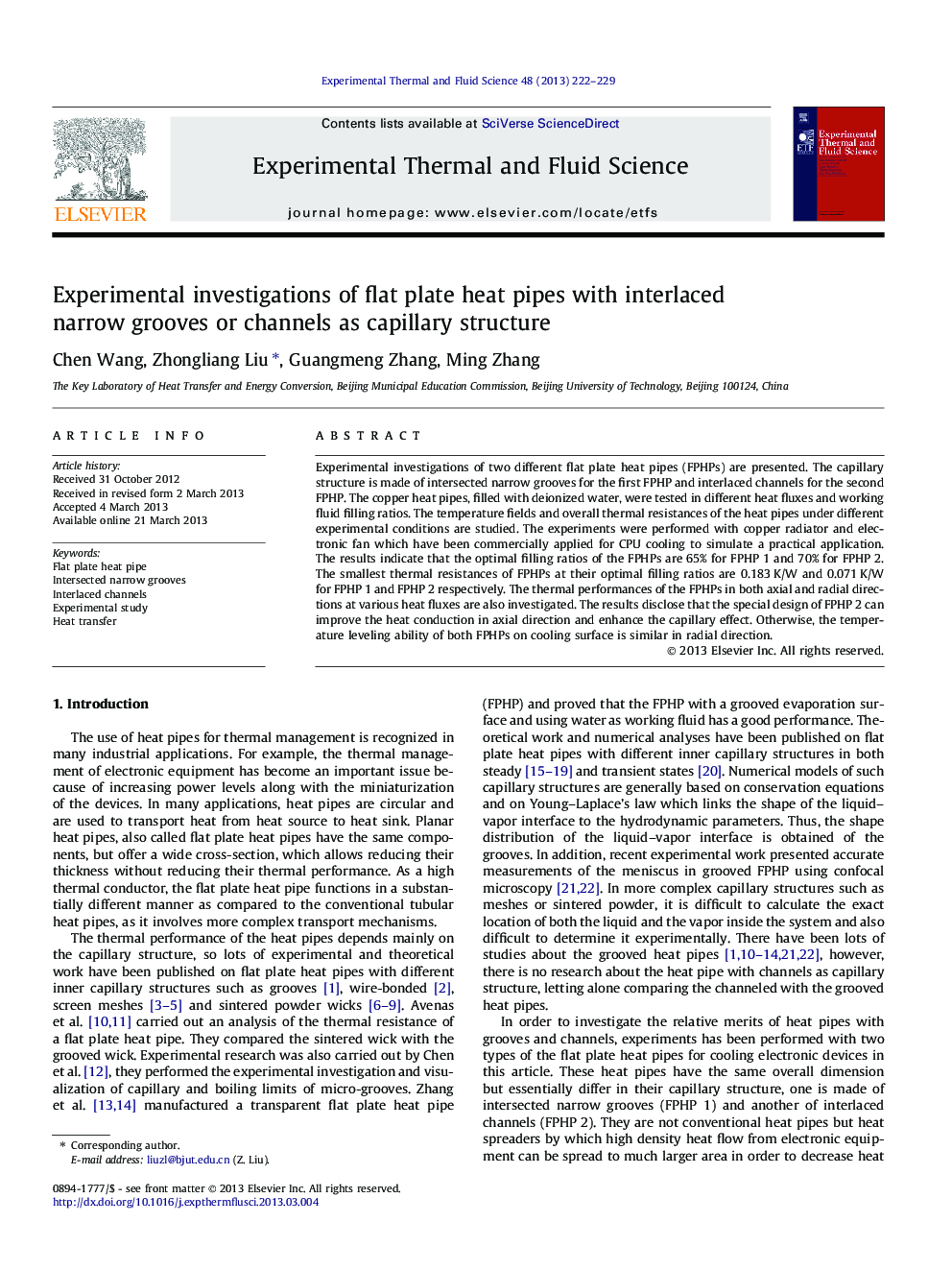| Article ID | Journal | Published Year | Pages | File Type |
|---|---|---|---|---|
| 651746 | Experimental Thermal and Fluid Science | 2013 | 8 Pages |
•Flat plat heat pipe for cooling of electronic device.•Capillary structures based on narrow grooves and channels.•Influence of several experimental parameters including filling ratio.•Investigation of thermal performance in both axial and radial directions.
Experimental investigations of two different flat plate heat pipes (FPHPs) are presented. The capillary structure is made of intersected narrow grooves for the first FPHP and interlaced channels for the second FPHP. The copper heat pipes, filled with deionized water, were tested in different heat fluxes and working fluid filling ratios. The temperature fields and overall thermal resistances of the heat pipes under different experimental conditions are studied. The experiments were performed with copper radiator and electronic fan which have been commercially applied for CPU cooling to simulate a practical application. The results indicate that the optimal filling ratios of the FPHPs are 65% for FPHP 1 and 70% for FPHP 2. The smallest thermal resistances of FPHPs at their optimal filling ratios are 0.183 K/W and 0.071 K/W for FPHP 1 and FPHP 2 respectively. The thermal performances of the FPHPs in both axial and radial directions at various heat fluxes are also investigated. The results disclose that the special design of FPHP 2 can improve the heat conduction in axial direction and enhance the capillary effect. Otherwise, the temperature leveling ability of both FPHPs on cooling surface is similar in radial direction.
